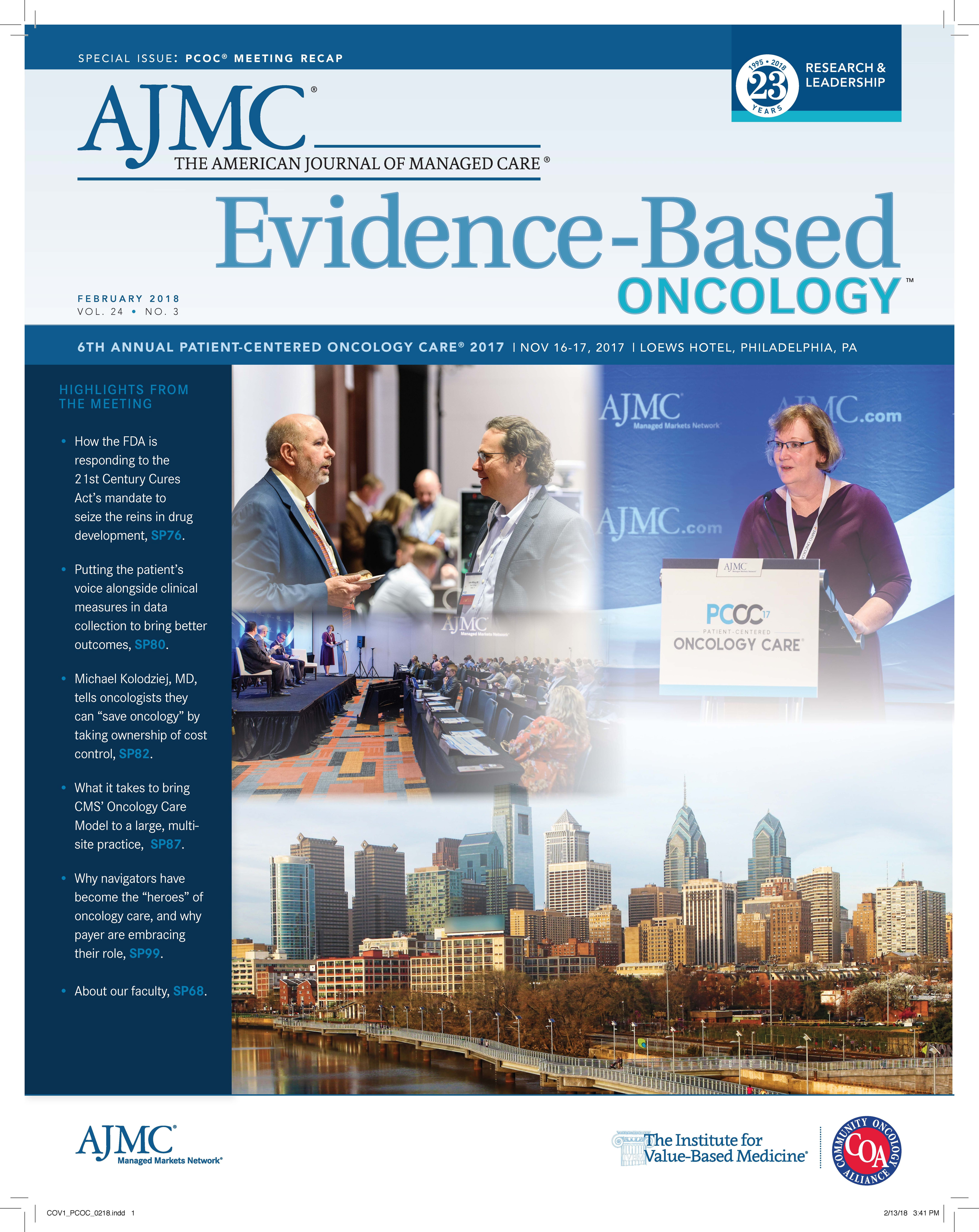- Center on Health Equity & Access
- Clinical
- Health Care Cost
- Health Care Delivery
- Insurance
- Policy
- Technology
- Value-Based Care
Via Oncology's Lokay on Real-World Impact of Digital Decision-Support Solutions
Coverage of digital technology updates at Patient-Centered Oncology Care, November 16-17, 2017.
Clinical care pathways have come a long way, according to Kathleen Lokay, the president and CEO of Via Oncology, who discussed the real-world impact of digital decision-support solutions at Patient-Centered Oncology Care® in Philadelphia, Pennsylvania. The meeting was held November 16- 17, 2017, presented by The American Journal of Managed Care®.
Lokay emphasized the importance of content in treatment pathways. She explained that treatment pathways typically start out small, with tracks for only a few diseases, and then evolve to incorporate different phases of care, like symptom management, workup, or surveillance.
At Via Oncology, Lokay said the evolving pathway model builds accountability among physicians by forcing them to consider the patient perspective in pathway development. This is accomplished through a committee system, with 36 panels that meet throughout the year to adapt and update pathways.
The 3 pathway determinants Lokay discussed in her presentation include:
- Efficacy: If one treatment represents the clear choice, it becomes the pathway.
- Toxicity: If efficacy between different treatments is comparable, the pathway calls for treatments with less toxicity to improve quality of life and reduce hospitalization and emergency department visits.
- Cost: Only if efficacy and toxicity are comparable will the pathway choose the lower cost treatment for the payer.
Lokay also discussed the need for multiple options that accommodate different patient preferences in the pathway. “Even though we haven’t changed the construct about how we develop the pathways, we’ve had to get smarter about giving more information if [patients] need it and creating situations where maybe the pathway even actually has a recommendation for a financial toxicity situation that would take you away from the single best and take you to something that has sort of that economic trade-off for the patient,” Lokay stated.
Despite the efforts and evolution of the pathway, real-world evidence has not yet been incorporated—but it could be added at a later point. “I always have trouble saying that phrase, ‘real- world evidence.’ And partially that’s because what we really need to be able to do is make sure that that real-world evidence has the same kind of voracity that the published trial data do,” Lokay explained. “But I think, until it rises to that level to actually make pathway decisions on treatment recommendations based on that, we’re just not there yet.”
She noted that pathways need to have a way of remaining up-to-date. She mentioned iKnowMed, which customizes and regularly updates the pathway so it can be easily shared. The output can then be used by the physicians to make treatment decisions.
The electronic health record (EHR) is also critical to decision support, according to Lokay. Integrating the EHR with the pathway decision-support software, like iKnowMed, would produce a high level of connectivity and common set of content for physicians to use. Additionally, making sure information from the most recent clinical trial results finds its way into pathways is critical, as this ensures the content of the pathway provides value to decisions.
Lokay separated the players involved into 3 categories: precision medicine support companies and big data companies, those that create services for payers, and those that are trying to create their own pathways.
At the conclusion of the presentation, when asked about the provider versus the payer pathway, Kathy discussed the content and software parts of the pathways. She overall predicts that pathways will expand into more areas of oncology and evolve as multidisciplinary pathways.
“So, the content is really not the issue that we find. What we find the rub in is that the physicians will use our pathway and then their team will still have to use the software to submit data for the other pathway...The problem is how to keep up with that because our pathways are changing, their pathways are changing, [and] they’re changing at different points in time,” Lokay said. “It is a real challenge.”

Exploring Racial, Ethnic Disparities in Cancer Care Prior Authorization Decisions
October 24th 2024On this episode of Managed Care Cast, we're talking with the author of a study published in the October 2024 issue of The American Journal of Managed Care® that explored prior authorization decisions in cancer care by race and ethnicity for commercially insured patients.
Listen
Managed Care Reflections: A Q&A With Laurie C. Zephyrin, MD, MPH, MBA
November 12th 2025To mark the 30th anniversary of The American Journal of Managed Care, each issue in 2025 includes a special feature: reflections from a thought leader on what has changed—and what has not—over the past 3 decades and what’s next for managed care. The November issue features a conversation with Laurie C. Zephyrin, MD, MPH, MBA, senior vice president for achieving equitable outcomes at the Commonwealth Fund. This interview has been edited for length and clarity.
Read More

